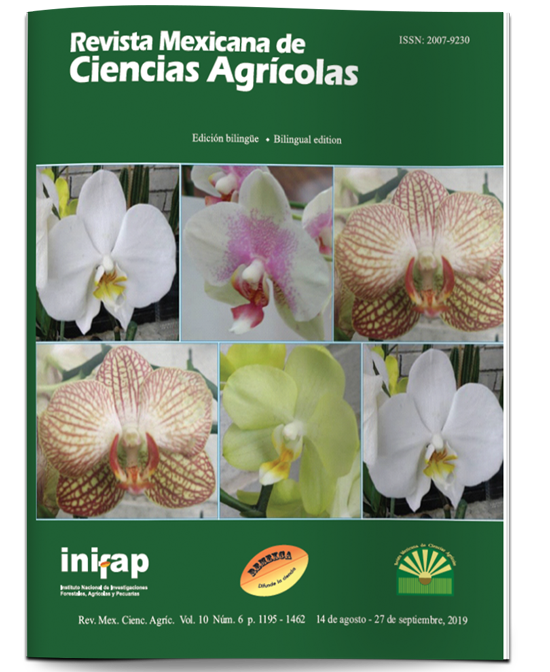Bee characterization in the sierra central-north region of Veracruz: context and transhumance
DOI:
https://doi.org/10.29312/remexca.v10i6.1689Keywords:
apiaries, beehive, bees, honeyAbstract
This article presents the result of an investigation carried out from August 2015 to November 2016, to characterize the beekeeping production and transhumant activity of the municipalities of Misantla, Yecuatla, Colipa, Juchique de Ferrer and Tenochtitlan. Interviews are conducted with specialists, experts and honey producers. It is found that the beekeeping activity is carried out for at least 500 families with an average experience of 22 years, with semi-extensive transhumant systems with an average production of 24 kg of honey per beehive, of which 9% have more than 500 beehives working under semi-technified schemes. Among these systems, only 10% of beekeepers have invested in the differentiation of beehive products. The volume of honey generated with production systems of a queen bee per beehive is at least 90 t year-1, with an economic value of $174 000 (US $). It has been found that 90% of beekeepers in the study region transhuman between places in that region and 23% of them do it to another entity. On the other hand, it was also found that access and permission to land are factors that define transhumant routes and identification of suitable areas for apiaries settlement. This research provides a map of areas used as apiaries settlements, as research work, their results deserve the attention of future research to identify spatial zones through systems of geo-positioning, as well as a transhumance program for these locations based on calendars of flowering.
Downloads
Downloads
Published
How to Cite
Issue
Section
License
The authors who publish in Revista Mexicana de Ciencias Agrícolas accept the following conditions:
In accordance with copyright laws, Revista Mexicana de Ciencias Agrícolas recognizes and respects the authors’ moral right and ownership of property rights which will be transferred to the journal for dissemination in open access. Invariably, all the authors have to sign a letter of transfer of property rights and of originality of the article to Instituto Nacional de Investigaciones Forestales, Agrícolas y Pecuarias (INIFAP) [National Institute of Forestry, Agricultural and Livestock Research]. The author(s) must pay a fee for the reception of articles before proceeding to editorial review.
All the texts published by Revista Mexicana de Ciencias Agrícolas —with no exception— are distributed under a Creative Commons License Attribution-NonCommercial 4.0 International (CC BY-NC 4.0), which allows third parties to use the publication as long as the work’s authorship and its first publication in this journal are mentioned.
The author(s) can enter into independent and additional contractual agreements for the nonexclusive distribution of the version of the article published in Revista Mexicana de Ciencias Agrícolas (for example include it into an institutional repository or publish it in a book) as long as it is clearly and explicitly indicated that the work was published for the first time in Revista Mexicana de Ciencias Agrícolas.
For all the above, the authors shall send the Letter-transfer of Property Rights for the first publication duly filled in and signed by the author(s). This form must be sent as a PDF file to: revista_atm@yahoo.com.mx; cienciasagricola@inifap.gob.mx; remexca2017@gmail.
This work is licensed under a Creative Commons Attribution-Noncommercial 4.0 International license.



